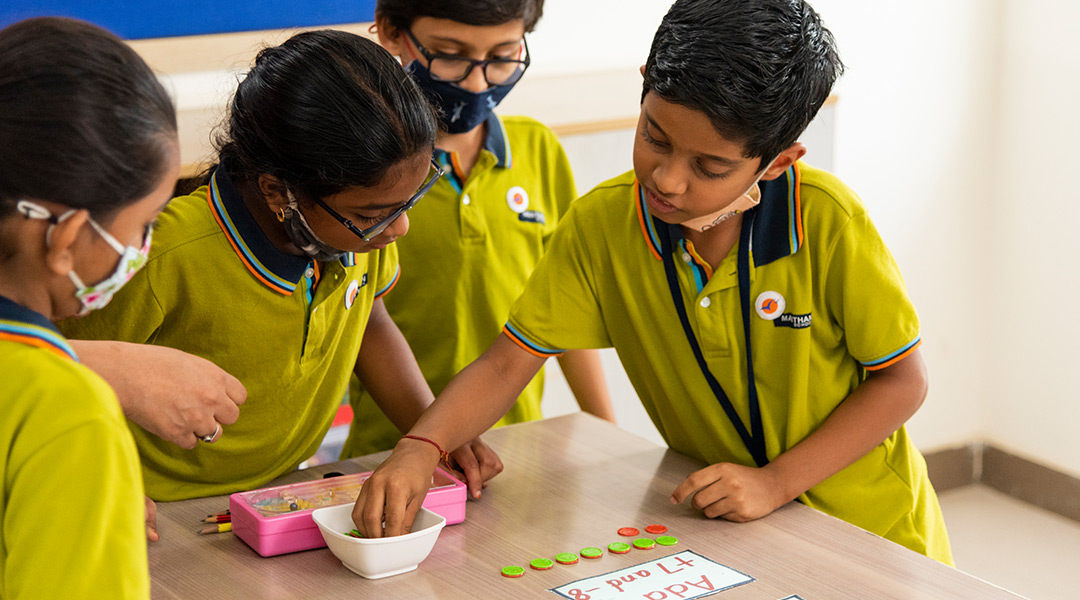Our education systems are built in a way that, at most times, learners remain passive in a learning environment. Teachers talk to the students, narrating and teaching the topics while students remain mere listeners. Active learning approaches can create a different environment where students need to think hard and constantly make use of the new information they have learnt. This makes them active participants in the learning journey and enables them to better understand the concepts. In this blog, we try to understand what active learning is and how we can encourage this practice in children, especially in their early years of education.
Understanding Active Learning
Active learning is a student-centered approach involving problem-based learning or experiential learning. The idea is to constantly interact and learn with the flow. The simplest example of this is the small role plays students are asked to do in class to explain a concept or the moral of a story. Instead of a teacher narrating a story, when students come up with a small skit themselves, they learn a lot more and the idea remains etched in their minds. Such play-based learning is actively implemented in Manthan.
Exploring through experiments and projects
There are several active learning approaches and a single approach never works for everyone. So, we need to explore it through different experiments and projects. We can start small by implementing in-class poll questions. We can conduct quizzes after teaching a lesson to check students’ understanding of the concept. We can divide students into groups and encourage them to discuss a certain topic before the lesson is taught in class.
Using Educational Apps and Online Resources
Nowadays, there are a lot of online resources that are available for help. These resources help teachers and students to experience active learning. The audio-visual medium also helps children retain attention. We can use educational apps to teach them a concept and follow it up with small question-and-answer sessions.
Linking Classroom Lessons To Real-Life Scenarios
In early years education, connecting learning topics with real-life examples is the basic yet most effective way to get students actively engaged in a classroom scenario. An interesting anecdote can often simplify the explanation of a concept, and students should also be encouraged to share their own. When we finally connect the dots, the students will learn the concept and also know how to relate it to real-life scenarios.
Conclusion
Teachers must always evaluate the impact of strategies to ensure that they help children learn easily. Play-based learning helps students take responsibility for their learning. As they actively engage in learning something, they construct their knowledge and develop their skills, which helps their metacognition process, where they develop a critical awareness about their learning behaviour and can self-evaluate their strengths and weaknesses as a learner. Such a practice goes a long way in not just improving their learning abilities but also in shaping a better version of an individual’s personality and improving their level of confidence.
Manthan’s Approach To Active Learning
At Manthan, a range of effective methods and examples are employed to enhance student learning. Hands-on activities are utilised by teachers to actively engage students, such as building solar system models or conducting science experiments. Additionally, students are involved in project-based learning, providing them with opportunities to apply classroom knowledge to real-world problems, such as designing robots or creating public service announcements. Discussions are encouraged, fostering critical thinking and peer learning. They also focus on in-depth learning of different subjects through activities specifically designed for the subject (Literati for English, Samanvay for Social, Srijan for Math and Science, Abhilasha for Hindi, etc.) Moreover, Manthan recognises the value of creativity and self-expression, encouraging students to explore their artistic abilities through activities like art, music, writing, and more.
How Can Kids Learn Actively?
- The flipped classroom approach is effective across all grades and levels. Students are equipped to study and research concepts, and activity-based learning reinforces them.
- Research-based learning increases student interest by requiring group work to examine and research numerous themes. Before starting the study, groups are divided and research stages are explained. Students are provided an overview of research processes before researching a topic utilising books, papers, online tools, etc.
- Peer learning is another active learning method. This helps kids appreciate each other’s perspectives, accept each other’s opinions, and learn from each other. This is used in addition to classroom instruction.
- Some themes are integrated with other disciplines to teach students that no subject can be studied alone. This sort of active learning teaches pupils to analyse and evaluate multiple subjects at once.

